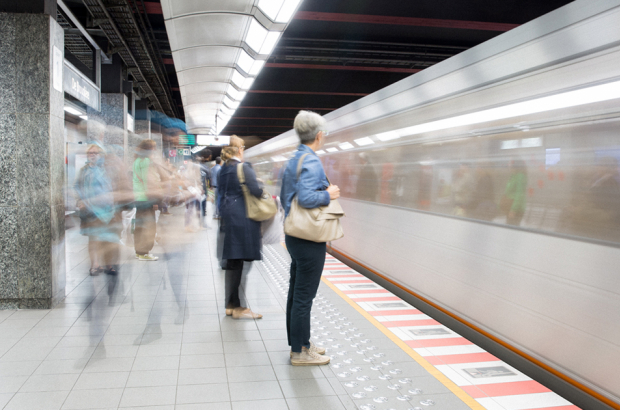- Daily & Weekly newsletters
- Buy & download The Bulletin
- Comment on our articles
Who picks the music on the Brussels metro?
As far as defining moments in musical history go, 2005 was a landmark for Brussels commuters. It was the year that, for the first time, Stib stopped playing soul-less elevator music in its metro stations and began playing tracks with a bit more pizzazz.
"People were sometimes grooving on the platform," Stib spokeswoman An Vanhamme says, remembering that seminal year when the Brussels transport operator embraced the breadth of contemporary music, from 80s pop and 90s R'n'B to smooth jazz.
Vanhamme says their aim was simple - to make Brusseleirs' travelling experience more pleasant. "Music softens the mood, and it usually adds a little more atmosphere in certain places," she told The Bulletin.
Now, 13 years later, the Stib has become if not a tastemaker, at least a sought-after DJ, and artists from Lady Gaga and Kings of Leon to the late David Bowie arranged exclusive deals with the Brussels transport operator to play their new albums in full before the official release.
The Brussels transport operator has also made tweaks to its programming. Where at first it played particular genres at particular times of day - say Top 40 music between 9.00 and 10.00 - today everything is more of a hopscotch, except for Wednesday afternoons with "more hit songs and trending songs" for the kids that finish school, and during rush hour with "a lot of uptempo music".
After 21.00 though, the only music you'll hear through the loudspeakers is classical music because the company has found that it discourages traipsers from, well, traipsing about in the stations.
The Stib playlists are put together by Ixidia, a French company specialised in creating and airing playlists for public venues. In any one hour, tracks by the British pop prince Ed Sheeran, Spanish pop singer Antonio Roméro, and Wim Soutaer, a 2003 finalist on the Flemish version of Pop Idol are for instance happily, perhaps incongruously, played back to back.
Although the same song is simultaneously played in stations around the city - from Erasmus to Herrmann-Debroux - every station adds its own spin of sorts. "In one station the ceilings might be higher than in another, so the strength of the sound has to be set at a different level," Vanhamme explains. "That's something that is really adjusted station by station."
There are few musical tastes and artists that the transport company shies away from, and Vanhamme is hard-pressed to think of examples. "Maybe the more experimental classical music and also maybe heavy metal, so the slightly more extreme music genres are maybe not part of the mix."
As for travellers who would rather forego the metro music because the stations are already enough of a din, Vanhamme advises a sense of perspective. "The metro isn't a quiet nature reserve," she says. "Of course you would want quiet if you sat somewhere on an bench in a park, but the metro has a lot of environmental sounds by definition."



















